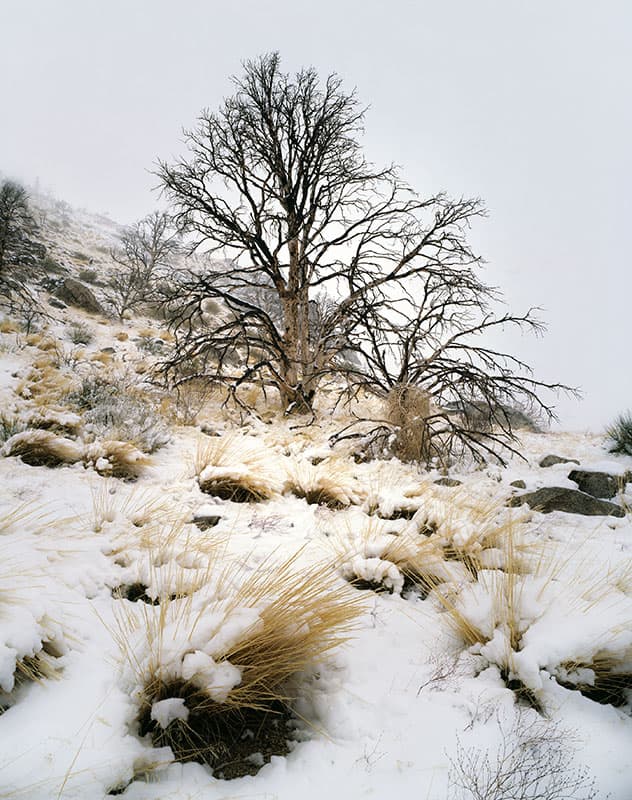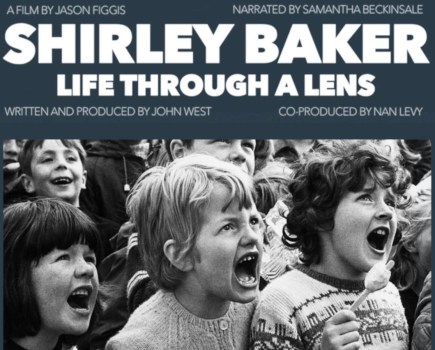Photo Insight with David Ward – Highway 395
 David Ward is one of the UK’s finest landscape photographers. With more than 20 years’ experience in large-format photography, he has photographed extensively throughout the UK and in countries such as Canada, Iceland, Norway and France. He has also led workshops for Light & Land. David has written two books on his photographic philosophy called Landscape Within and Landscape Beyond
David Ward is one of the UK’s finest landscape photographers. With more than 20 years’ experience in large-format photography, he has photographed extensively throughout the UK and in countries such as Canada, Iceland, Norway and France. He has also led workshops for Light & Land. David has written two books on his photographic philosophy called Landscape Within and Landscape Beyond
David Ward ventured into a blizzard to capture this image while on a trip to northern California. He tells us how all the elements came together
This image, called ‘Highway 395′, was taken six or seven years ago. It’s in northern California, pretty much right next to the highway – hence the name. There had been a forest fire a few years prior, explained the local guide, who also told me that there was a really big snowstorm coming through that day. I thought the scene was kind of evocative of the whole place.
This image was shot on a very wide lens, which is unusual for me. It was 72mm lens on a Linhof Technikardan, which I suppose is the equivalent of around a 20mm lens on full frame. That may not sound that wide, but it certainly is for me! On this occasion, I wanted to include the tuft of grass in the foreground and make it show the difference between that and the few trees behind.
I was facing into a blizzard, so there were these big fat snowflakes coming in. I kept thinking that I was going to get one right in the middle of the lens but, miraculously, I didn’t. The only technical issue I had was getting the exposure right, making sure I didn’t blur out the snow. On that really wide lens you get a little bit of fall-off in illumination towards the edges, so I had to do a little post-processing work.
While there was a lot of heavy snow, it wasn’t particularly windy so the tree wasn’t moving around. I just waited for gaps in the flurries. In an effort to avoid getting snow on the lens, I put a shade on the top to try to keep it away. I suppose the image looks calmer than it was at the time, because the snow is mostly white against white and doesn’t show up. The only bits of black are on the tree trunks and rocks, so unless a snowflake falls past them at just the wrong moment it’s not going to show up in the image. It’s an interesting element of the image that the conditions of the day aren’t necessarily obvious.

I thought the scene had a sort of melancholic beauty, and the tracery of the trees was very attractive. I like the notion of finding beauty in subjects that are stark – and this is a pretty stark subject – so I think that’s what attracted me to making the picture in the first place.
I wanted it to be a calm image, but not a pretty one. Beauty is its own thing – it’s not just pretty on steroids. Beauty is something entirely different, as it has a depth to it, and that’s what I was reaching for. I wouldn’t claim to always get it right, but I think this image works quite well in that respect.
This is a more complicated image than I often make. That’s one of the reasons why I used the wideangle lens, to be able to get closer to the tree while keeping in the foreground the little tuft of grass that’s partially obscured by the snow. That is something you could only achieve using a wideangle lens. If you were to walk further back, you’d hit a lot of other tufts of grass as well as rocks and other plants. With the wideangle optic, however, it gives you that separation: it excludes the other rubbish surrounding the scene, and then everything that’s beyond the trees is either hidden by the snow itself or very small in relation to the subject. The hill rises behind the trees and gradually fades. If I’d shot that scene without the snowstorm, all the background would have been much clearer and the image would have had much more detail in it, but that wasn’t what I wanted at all. I wanted to be able to make the trees really stand out so the background of falling and settled snow was vital.
As always, when I’m shooting I’m responding to the circumstances that I find, so I probably wouldn’t have shot the trees if the light had been different. I suppose the classic way that a lot of people would have shot this scene would have been in warm light, perhaps early in the morning, but I think that would have overpowered the subject. You would come away from the image only really seeing the light and not noticing everything else that’s going on. Shooting in cool or even light, as I did in this case, can be a way of really emphasising your subject.
David Ward was talking to Jon Stapley
To see more of David’s images or to book a place on one of his workshops, visit www.into-the-light.com







